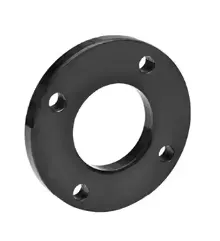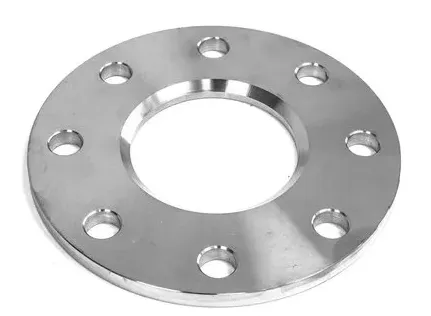-
Cangzhou Yulong Steel Co., Ltd.
-
Phone:
+86 13303177267 -
Email:
admin@ylsteelfittings.com
- English
- Arabic
- Italian
- Spanish
- Portuguese
- German
- kazakh
- Persian
- Greek
- French
- Russian
- Polish
- Thai
- Indonesian
- Vietnamese
- Zulu
- Korean
- Uzbek
- Hindi
- Serbian
- Malay
- Ukrainian
- Gujarati
- Haitian Creole
- hausa
- hawaiian
- Hebrew
- Miao
- Hungarian
- Icelandic
- igbo
- irish
- Japanese
- Javanese
- Kannada
- Khmer
- Rwandese
- Afrikaans
- Albanian
- Amharic
- Armenian
- Azerbaijani
- Basque
- Belarusian
- Bengali
- Bosnian
- Bulgarian
- Catalan
- Cebuano
- China
- China (Taiwan)
- Corsican
- Croatian
- Czech
- Danish
- Esperanto
- Estonian
- Finnish
- Frisian
- Galician
- Georgian
- Kurdish
- Kyrgyz
- Lao
- Latin
- Latvian
- Lithuanian
- Luxembourgish
- Macedonian
- Malgashi
- Malayalam
- Maltese
- Maori
- Marathi
- Mongolian
- Myanmar
- Nepali
- Norwegian
- Norwegian
- Occitan
- Pashto
- Dutch
- Punjabi
- Romanian
- Samoan
- Scottish Gaelic
- Sesotho
- Shona
- Sindhi
- Sinhala
- Slovak
- Slovenian
- Somali
- Sundanese
- Swahili
- Swedish
- Tagalog
- Tajik
- Tamil
- Tatar
- Telugu
- Turkish
- Turkmen
- Urdu
- Uighur
- Welsh
- Bantu
- Yiddish
- Yoruba

Jul . 20, 2025 16:36 Back to list
Durable Plate Flange Solutions Industrial Pipe Connections
Understanding Flange Fundamentals
In industrial piping systems, flange technology forms the backbone of safe and efficient operations. A flange is a protruded ridge or rim used to strengthen components or facilitate attachments. When paired with gaskets and bolted connections, these critical components create sealed joints capable of withstanding extreme pressures, temperatures, and corrosive environments. This comprehensive technical guide examines flange mechanics, with special focus on the widely implemented plate flange designs.
The continuous advancement in flange engineering responds to increasing demands from energy, petrochemical, and water treatment sectors. According to ASME B16.5 standards, modern plate flange configurations must endure pressures exceeding 2,500 PSI while maintaining leak-proof integrity at operational temperatures ranging from -50°F to 1500°F. These extreme performance requirements have driven innovations in metallurgy and geometric design.
Manufacturing Excellence at CANGZHOU YULONG STEEL
Global Headquarters
Lijiapu,Wulongtang Village,Cang County,Cangzhou City,Hebei Province
Connect With Us
Phone: +86 13303177267
Mobile: +86 13303177267
Email: admin@ylsteelfittings.com
Explore Solutions
🔩 Backing Ring Flange Technology

The innovative plate flange known as Backing Ring Flange represents advanced engineering in pressure containment systems. This specialized fitting combines a primary flange body with a structural reinforcement ring that significantly enhances load distribution across the joint interface.
Technical specifications include:
- Material composition: ASTM A105 carbon steel or A182 F304 stainless variants
- Pressure rating: Class 150 to Class 2500 ASME compliance
- Temperature resistance: -29°C to 425°C operational range
- Connection methodology: Welded or bolted installation options
These structural enhancements make Backing Ring Flanges particularly valuable in critical applications such as offshore platforms, nuclear facilities, and high-pressure steam systems where joint integrity is non-negotiable.
Technical Specifications Analysis
| Flange Type | Material Grade | Pressure Rating (PSI) | Temp Range (°F) | Corrosion Resistance |
|---|---|---|---|---|
| Weld Neck Flange | ASTM A105 | 2,500 | -20 to 1000 | Medium |
| Slip-On Flange | ASTM A350 LF2 | 1,440 | -50 to 650 | High |
| Plate Flange | ASTM A182 F316 | 1,150 | -100 to 800 | Excellent |
| Blind Flange | ASTM A181 | 2,000 | -75 to 900 | Medium |
Industrial Flange Applications
Flange Engineering Q&A
1. What are the primary material options for industrial flanges?
Industrial flange manufacturing primarily utilizes carbon steel (ASTM A105), stainless steel (ASTM A182 F304/F316), alloy steel (ASTM A182 F11/F22), and specialized nickel alloys for corrosive environments. Material selection depends on pressure-temperature requirements and chemical compatibility with transported media.
2. How do plate flanges differ from weld neck flanges?
Plate flanges feature a flat, circular design with bolt holes, typically used for low-pressure applications with simple connections. Weld neck flanges incorporate a tapered hub for smoother stress transition and are preferred for high-pressure/temperature systems requiring maximum structural integrity.
3. What standards govern flange manufacturing?
Key standards include ASME B16.5 (dimensional standards for pipe flanges), ASME B16.47 (large diameter steel flanges), ASME B31.3 (process piping requirements), API 605 (large diameter carbon steel flanges), and ISO 7005-1 (international specifications).
4. What factors determine flange pressure ratings?
Pressure classes (150, 300, 600, 900, 1500, 2500) are determined by material strength, temperature exposure, bolting tension capabilities, and gasket performance. Rating decreases as temperature increases due to material strength reduction.
5. How does thermal cycling affect flange joints?
Repeated thermal expansion/contraction causes bolt stress relaxation, potentially leading to joint leakage. Solutions include proper gasket selection (spiral wound or ring joints), controlled bolt tightening patterns, and allowance for thermal movement in system design.
Industrial Implementation Scenarios
Chemical Processing
Flange systems in chemical plants require exotic alloys like Hastelloy C276 for corrosive acid transport pipelines operating at 300-400°F. Gasket selection is critical to prevent leakage of hazardous substances.
Offshore Drilling
Offshore platforms implement specialized plate flange configurations with cathodic protection to resist saltwater corrosion. Material certifications must meet NACE MR0175 standards for sour service environments.
Water Treatment Facilities
Municipal water systems utilize large diameter Class 150 flange connections (24"-60") with rubber gaskets for potable water transport. NSF/ANSI 61 certification is mandatory for material compliance.
Flange Industry Evolution
The global flange market, valued at $7.8 billion in 2023, is projected to reach $12.4 billion by 2030 (CAGR 6.8%). Driving factors include:
- Increasing energy infrastructure investments in developing economies
- Replacement demand in aging North American and European industrial facilities
- Material innovations enhancing performance in extreme environments
- Digitalization trends with smart flange monitoring systems
Technological advancements focus on laser scanning for dimensional verification, 3D printed specialty alloys for complex geometries, and embedded sensors for real-time joint integrity monitoring. These innovations enable predictive maintenance strategies that minimize unplanned downtime in critical operations.
Technical References & Citations
- ASME B16.5 Standards Update: "Advanced Flange Design Considerations for High-Pressure Applications" - ASME Standards Portal
- Materials Engineering Journal: "Corrosion Resistance in Offshore Flange Applications" - Materials Chemistry & Physics
- Pipeline Systems Institute: "Bolted Joint Integrity in High-Temperature Operations" - Technical Resources Portal
- International Piping Standards Review: "Global Harmonization of Flange Specifications" - ISO 7005-1 Documentation
Latest news
-
ANSI 150P SS304 SO FLANGE
NewsFeb.14,2025
-
ASTM A333GR6 STEEL PIPE
NewsJan.20,2025
-
ANSI B16.5 WELDING NECK FLANGE
NewsJan.15,2026
-
ANSI B16.5 SLIP-ON FLANGE
NewsApr.19,2024
-
SABS 1123 FLANGE
NewsJan.15,2025
-
DIN86044 PLATE FLANGE
NewsApr.19,2024
-
DIN2527 BLIND FLANGE
NewsApr.12,2024
-
JIS B2311 Butt-Welding Fittings LR/SR 45°/90° /180°Seamless/Weld
NewsApr.23,2024













